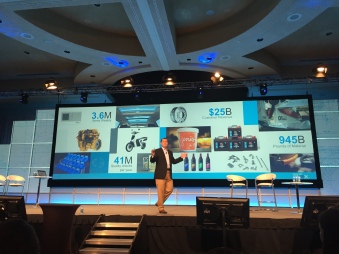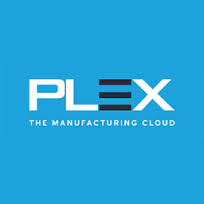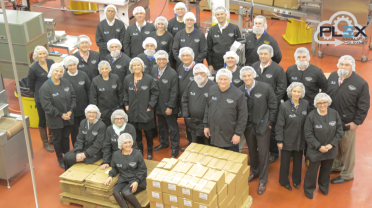
I just came back from Nashville, well actually Las Vegas but was in Nashville to start the week. The JDA Focus 2016 event was being held in the Music City. It brought together a large gathering of some of the top supply chain professionals from the around the globe. Per usual, JDA put on a good show, at least the first day since that was what I was able to attend! But even being in Nashville for less than 24 hours, I took away some observations from the event and JDA:
- Talking a good game – The main stage presentations by CEO Bal Dail and Chief Revenue Office Razat Guarav were in stark contrast to the former administrations. How? Much more focused on the disruptors facing the market and with a keen eye on the future. Bal focused on the company embarking in a “big pivot” focusing on how customers are impacting our businesses. While Razat hit on the major disruptors that face supply chains and our industries. More on both later. What was refreshing was a message from main stage that called out and hit on many of the trends and drivers that we are all facing. Both Bal and Razat also started giving the audience a glimpse into how JDA will address these shifts, whether it is the new retail.me offering, greater emphasis on JDA labs or creating a digital hub, all promising efforts to address their customers’ needs. Coupling their willingness to address new disruptors head on coupled with solutions that are poised to take on these changes was refreshing to hear from this leadership team, not always what would come from main stage.
- Facing disruptors…and making the pivot – One of the big threads that we at Constellation Research have been working on with our customers were reflected on main stage in Nashville (as much as I would like to take credit for those ideas…alas I cannot). Razat hit on 5 big themes of disruption: mobile, IoT, social, cloud and big data. We speak at length about these disruptors; feel free to read our research, but what is the biggest underlying driver is the rise of the consumer. Many of these disruptors have empowered the consumer, given the consumer a growing voice in the ecosystem. When it comes to the supply chain whether you are B2B or B2C the consumer has become the driver – your business must make this the center of their strategy. The same goes for the technology providers that are servicing these businesses. Bal and his team have a great challenge ahead as they look to pivot themselves to help their customers’ better address the consumers and the disruptors that have made chaos the new norm.
- So where does JDA go from here? So JDA is painting a picture of awareness and willingness to pivot to meet their customers’ needs. Good. But what does the future hold for JDA? Over the past decade the company has absorbed Manugistics, i2 Technologies and Red Prairie. All were best of breed supply chain solution providers. JDA became, on paper, a supply chain powerhouse being able to address a wide array of industry needs. Ranging from process and discrete manufacturing, retail and logistics. Impressive. But the question remains – what does New Mountain Capital have in mind long term for this asset? While other supply chain players have been focusing their efforts on specific industries – players like Plex focused on manufacturing, Aptos being spun off from Epicor to focus on retail while Epicor can concentrate on ERP. Can JDA continue to find success competing on all fronts? Or do they need to consider following a similar strategy as Epicor and break up the parts? Maybe the pieces competing on their own are more powerful than the whole? I do not believe this is the only direction JDA can take, but at some point New Mountain Capital will want to reap the rewards from their investment. How that happens will be interesting to observe.
JDA remains a major player in the field of supply chain. The leadership and culture have an aggressive level of expectations of themselves and the business – it is now up to the solutions and software to catch up. They are clearly aware and in tune with the disruptors that are impacting all businesses. The next few months will be crucial for the JDA leadership team to implement their pivot strategy and find success.
Disclosure – I worked at i2 Technologies from 2004 to 2009, i2 Technologies was acquired by JDA in 2009.





